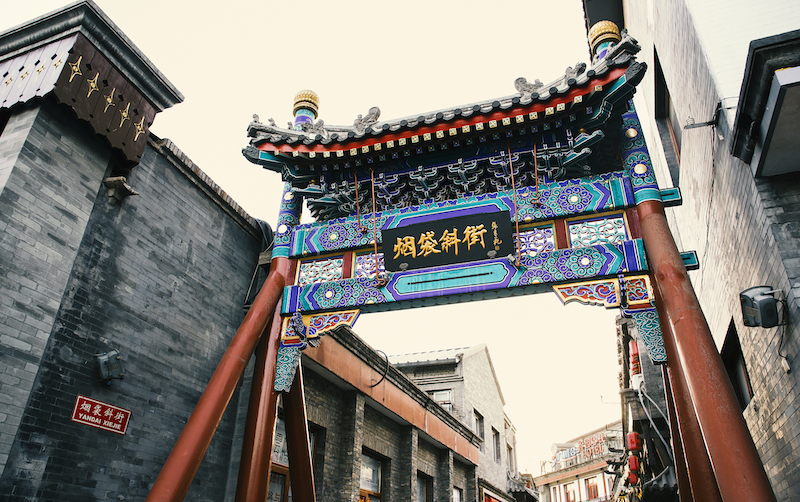The
Central Axis of Beijing extends 7.8 kilometers from the Bell and Drum
Towers in the north to the Yongding Gate in the south. The ancient
cultural streets along this axis are bursting with renewed vitality,
where China-Chic, international flair, and the lively spirit of
everyday life blend and coexist. Let's take a stroll along the
Central Axis of the ancient cultural streets and discover the unique
charm of Beijing.
Qianmen Street

Along Beijing's Central Axis, Qianmen Street stretches approximately 800 meters. Separated by Tian'anmen Square, it faces the Forbidden City from a distance. For tourists visiting Beijing to embrace the city's unique charm, Qianmen Street is often their first destination.
Qianmen Street has transformed into a fusion of tradition and modernity, known as a "Chinese goods street". It houses the essence of Chinese culture and brand stories, waiting for curious consumers to explore and experience. Complementing the century-old shops are new projects utilizing rejuvenated ancient buildings, gathering many emerging domestic products and trendy brands popular on social media.
Dashilar

The name of "Dashilar" (大栅栏) originates from the Manchu language. The Hutong's name is a combination of the Chinese character 'big' (Da in Chinese pronunciation) and the Manchu words "sha la" with the "er" suffix, meaning "big jewelry market".
As a comprehensive commercial street, Dashilar offers a variety of shops, such as Zhang Yiyuan Tea Shop, Tongrentang Pharmacy, Liubiju Soy Sauce Shop, and RuifuxiangSilk and Cotton Shop. Visiting Dashilar today, one can still see these time-honored brands.
Di'anmen Outer Street
Di'anmen Outer Street, located at the northern end of Beijing's Central Axis, stretches from Di'anmen to the Drum Tower, spanning nearly 800 meters. Since its formation in the Yuan Dynasty, it has always served as a commercial hub, making it the earliest and the most stable commercial street along Beijing's Central Axis.
After a century of changes, "Gulouqian" (literally means "in front of Drum Tower") remains bustling. It integrates ancient cultural vibes with modern commerce, bringing vigor to this old street.
Yandai Xiejie (Slanted Tobacco Pipe Street)

Strolling along the west side of Di'anmen Outer Street, you will discover a small street called Yandai Xiejie, or Slanted Tobacco Pipe Street. This street runs diagonally from east to west, resembling a Chinese tobacco pipe. The narrow street looks like pipe's stem, with the eastern entrance resembling the mouthpiece, and the western entrance turning south towards Yinding Bridge, resembling the bowl of the pipe. The buildings on both sides of the street are elegant and simple, showcasing a traditional Ming and Qing style.
Today, Yandai Xiejie is one of Beijing's most fashionable old streets. Spanning just over 230 meters, it features various snack shops, antique stores, and craft shops that attract many visitors.
Nanluoguxiang (South Luogu Lane)

South Luogu Lanewas a bustling commercial street during the Yuan Dynasty. Located at the geometric center of the Yuan capital, it lies close to the eastern side of the Central Axis, stretching less than 800 meters from the East Street of the Drum Tower in the north to the Di'anmen East Street in the south.
South Luogu Lane was once a residence for officials, cultural celebrities, and renowned figures, including masters of Chinese painting like Qi Baishi and literary giant Mao Dun. Today, as a historic and cultural preservation area, South Luogu Lane not only preserves its long-standing hutongs and traditional courtyard houses but also bears rich cultural and historical significance due to these famous former residences.
(Source: Visitbeijing.com.cn)

